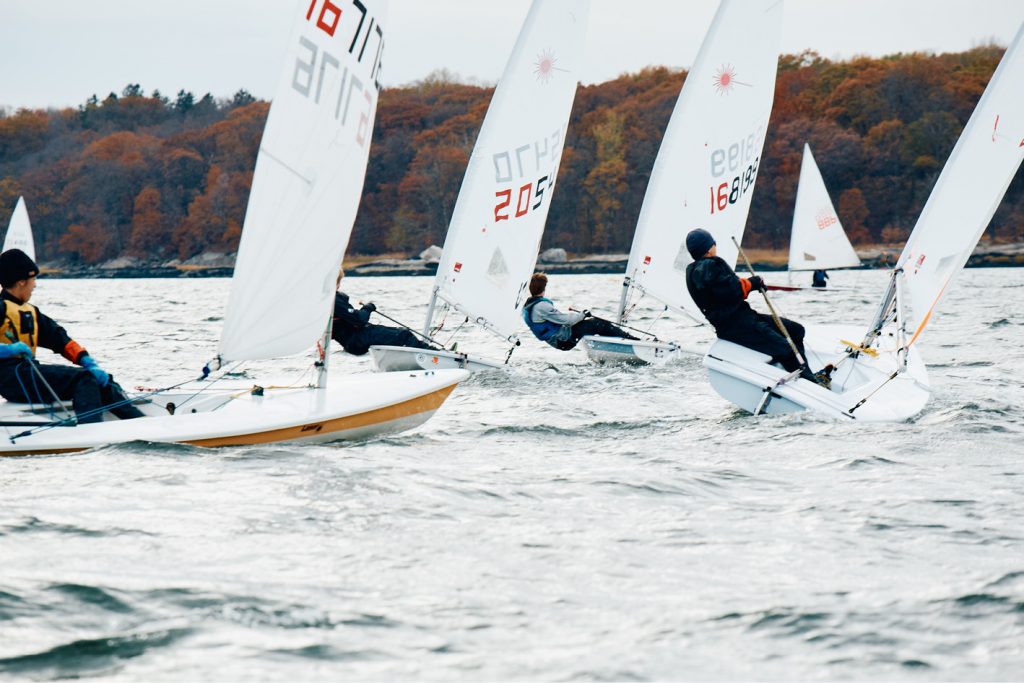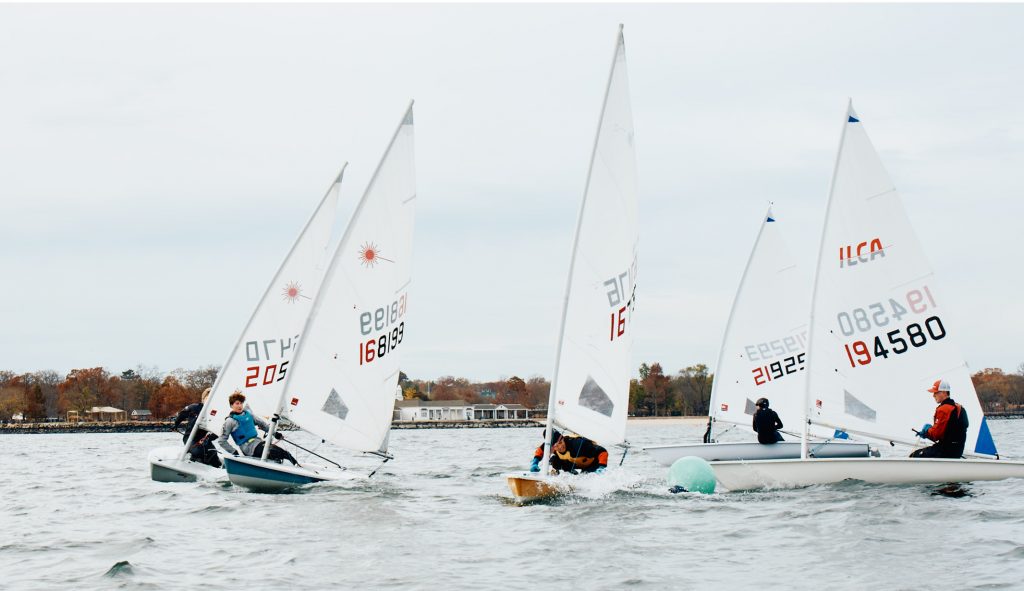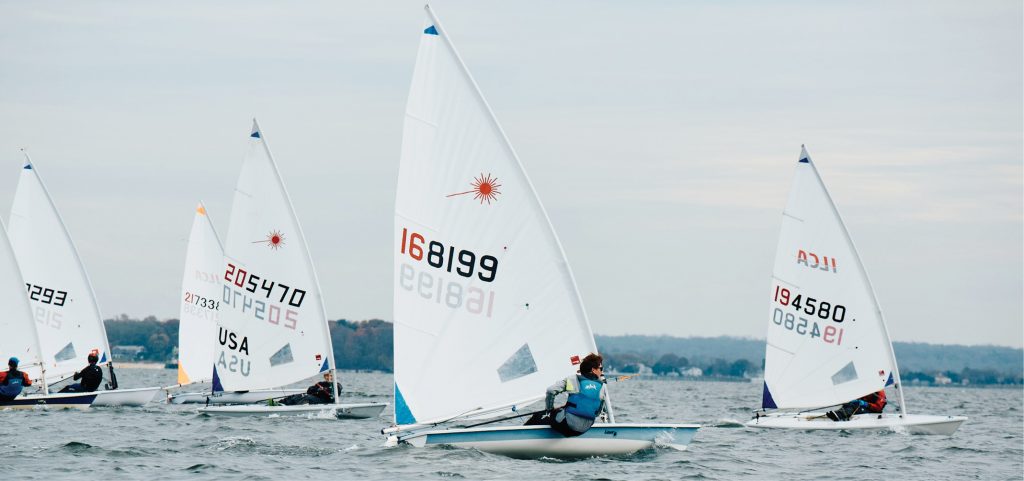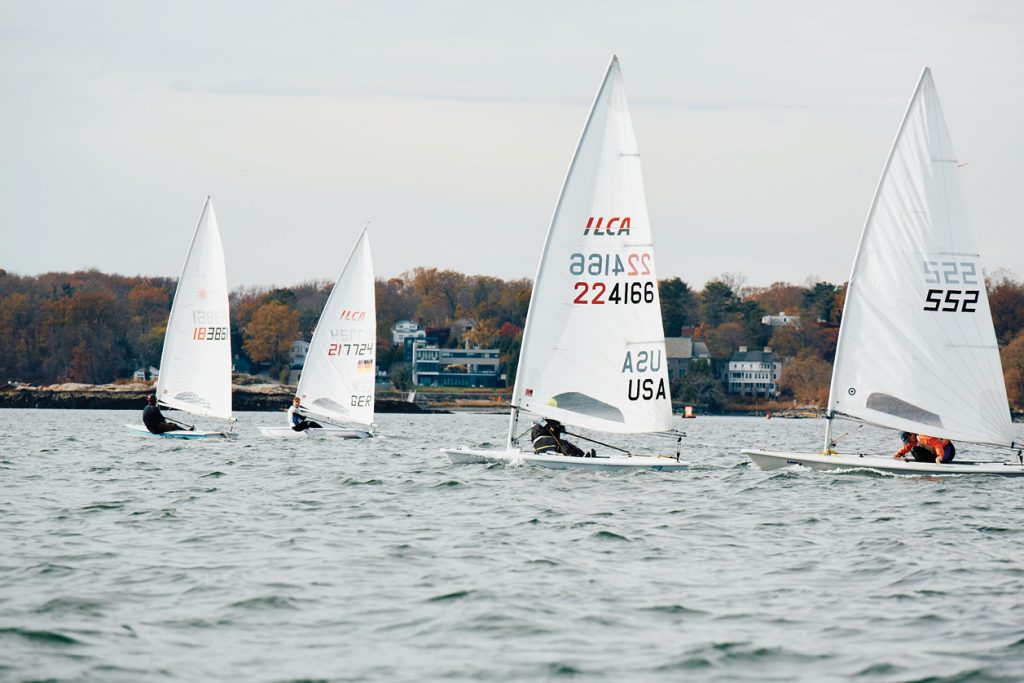A reluctant frostbiter at first, the author learned the sport is a winter-long training camp for both body and mind.
Story & photos by Blaine Davis

An amazing group of people who couldn’t be more keen on the sport © Blaine Davis
It’s November, and the boatyard is alive with activity. Boats are being hauled out and power washed while the low hiss of a blowtorch punctuates the air. In the back lot, yard workers shout to each other as they maneuver a keelboat into its winter parking spot.
My boat, though, is heading the other way. After waiting all summer up in my garage, hoping that I’ll fix the various bumps and scratches that I tallied over the last winter season, my Laser is rolling toward the docks. In just a few weeks, the club will be winterizing and shutting off the water supply at these same docks in preparation for the freezing temperatures of winter in New Rochelle, New York.

Whether you call Bruce Kirby’s planing 14-footer a Laser or an ILCA, folks are enjoying the heck out of ‘em at Huguenot Yacht Club. © Blaine Davis
For me, this feels natural, but part of your brain might sense that we’re going the wrong way down a one-way street. This is where the curious friend chimes in at a holiday party with the big question: Why do you do this?
It’s a great question, and my answer has changed over time. Originally, I was motivated by an unquenchable thirst for more sailing. As an adult returning to sailing after a years-long hiatus, I was hooked on the sport and wanted more: more all-around racing experience and more time at the helm.
The first time a friend suggested racing Lasers at Huguenot Yacht Club in the winter, I turned them down. But after a year spent pining for more days on the water, I was ready when the idea came up again. Plus, as a kid sailing Sunfish in Sea Scouts back home in Corpus Christi, Texas, I was always impressed with the Laser’s sleek look—perhaps that weakened my resolve enough to take the plunge.

Frostbiting at HYC is a great way to make new friends and sail on new boats. © Blaine Davis
Once I started, I quickly discovered the beauty of spending more time on the water for both my sailing skills and overall well-being. From November to March, our fleet spends nearly twenty days outside, staying active, socializing, and sharpening our skills. With about a hundred starts and races, it’s a chance to learn, make mistakes, and improve—like a winter-long training camp for both body and mind.
Another unexpected bonus is the driven but joyful community we’ve built. A few dozen singlehanded sailors meeting weekly naturally leads to more mixing and sharing at the club afterward, unlike keelboat racing, where teams often stick to themselves. The focus on learning and knowledge-sharing fosters great discussions—and, as sailors, we can always talk about the weather at length if we need a conversation starter.
In December, Dave Perry joined us on the water, shooting video of our races while offering advice and assistance along the way. Back at the club, during his charming debrief (titled The Good, the Bad, and the Ugly), Dave emphasized the importance of knowledge-sharing within the group. He reminded us that helping newcomers is vital to building a strong fleet, and by offering advice and support to those still learning the ropes, we help foster excitement and ensure everyone feels encouraged to keep coming back.

Belay that device and get out there! © Blaine Davis
Reflecting on this, I think of all the help I received along the way with rigging, equipment, and mastering the finer points of keeping my mast in the air. I noticed that the same sailors who guided me also dedicated their time and energy to keeping the whole program afloat. Their generosity inspired me to step up: taking photos of our fleet in action and writing weekly emails to share bits of knowledge got me started along the path to helping out.
But getting back to the recurring question when it’s 30 degrees out: Why do you do this?
I only knew one other person at Huguenot when I started frostbiting there. Five years later, I’ve shared dock space with dozens of sailors and sailed with new teams in the off-season (summer) thanks to the network of enthusiasts comprising this community.
There’s something purifying about cold weather. It really peels away anything else. If you’re willing to come out all winter and sail, you must love it, and that leaves you with an amazing group of people who couldn’t be more keen on the sport. The community we’ve created is something that has become a rare thing in the modern world, perhaps as uncommon as a group of people who can put down their phones and go have fun outside all day. ■




